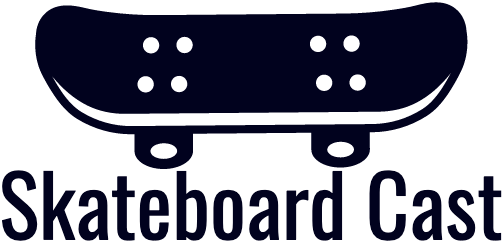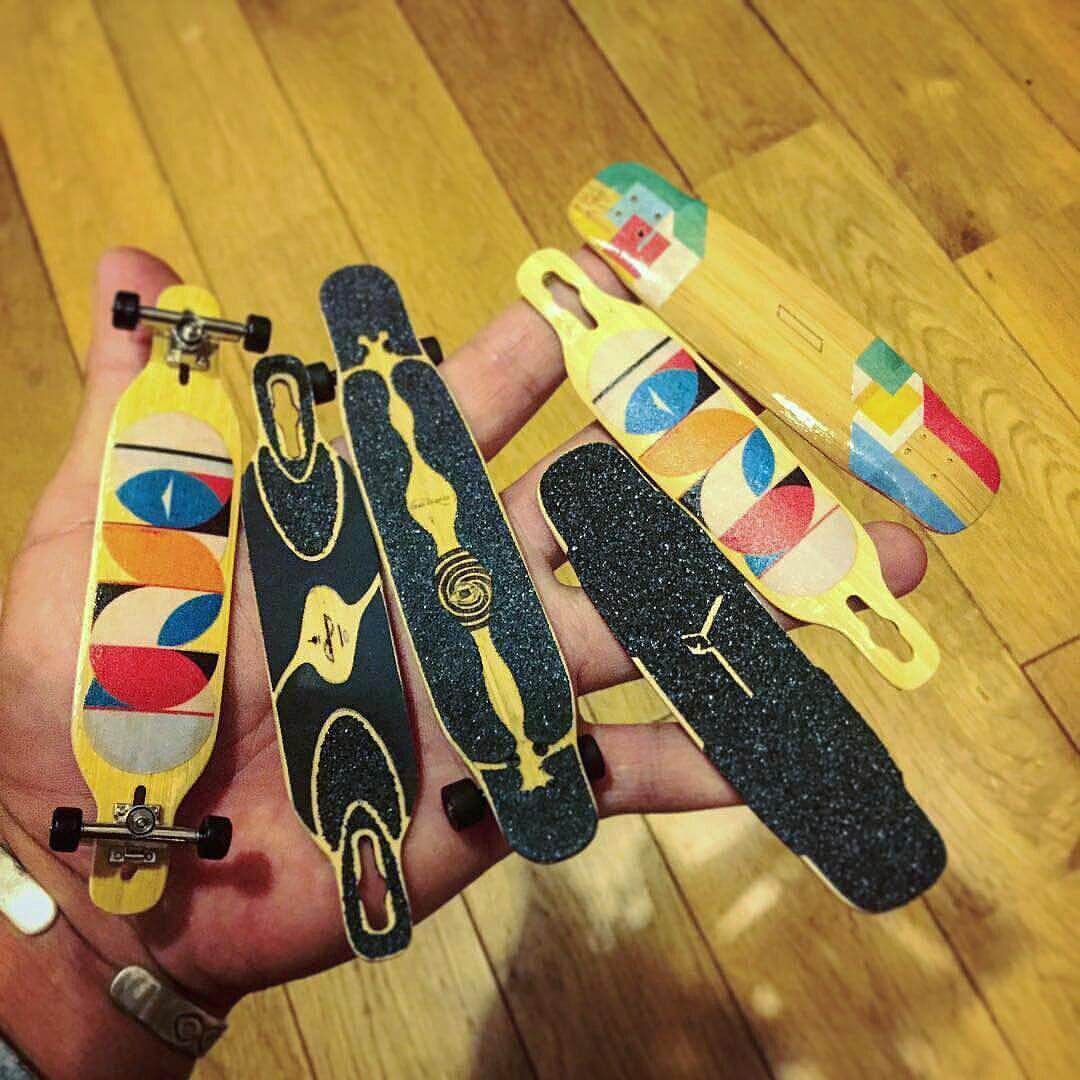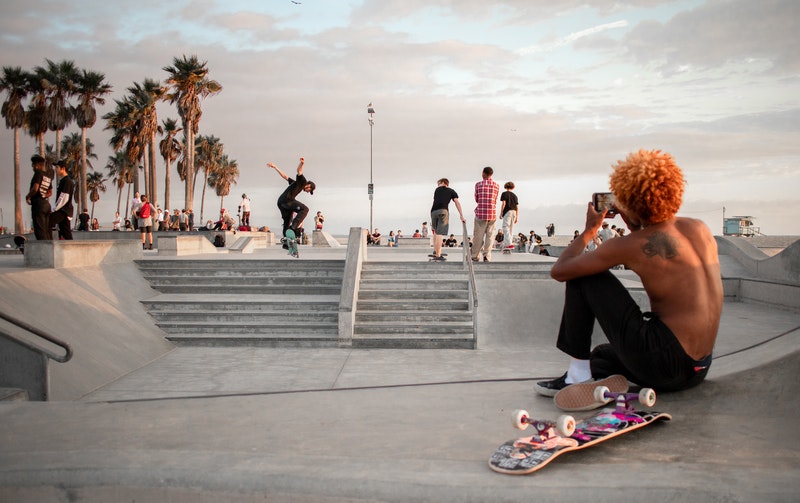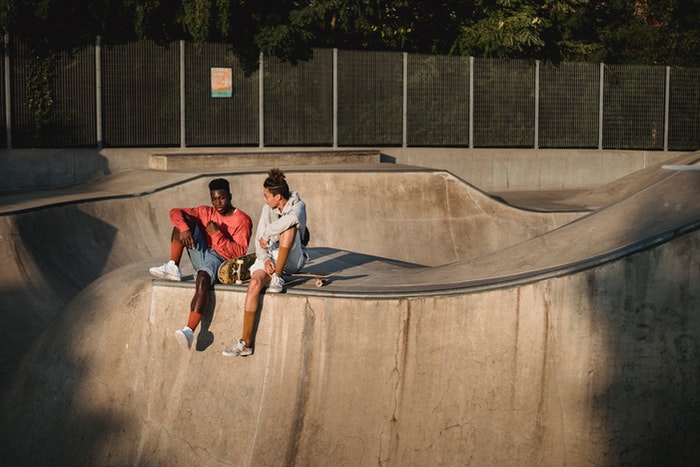Introduction
Getting started with longboarding requires a lot of time and practice. However, this process would become easier if you know essential longboarding tips for beginners.
This article provides you with stunning tricks that can facilitate your very first ride and reduce injury and suffering as well. No more hesitation and dive into it now. Skateboard Cast!
[toc]
Longboard Tips For Beginners
Although as challenging as it is to master longboard riding, you can boost your performance with some magic tips.
Tip 1: Choose The Right Longboard
Longboards come in many sizes and shapes, ranging from the long, midsize, short, narrow to wide types. Each has its own perks and meets different demands from the users. The choice all comes down to your height, age, and style of riding.
The height and age significantly influence the choice of longboard size. If you are older and taller, your feet are likely bigger compared to smaller, younger riders. It is undoubtedly much more comfortable for you to skate on wider, longer boards.
In contrast, shorter and narrower boards would be wise options for people with smaller feet. They offer you more control so that riders can do basic movements such as steering, turning, and stopping easily.
A Short Longboard
There are four main riding styles: cruising, downhill, freeride, and freestyle. For each of them, a particular type of longboard performs better than the rest.
For example, a midsize board is suitable for freestyle as it has the balance between maneuverability and stability.
A Midsize Longboard
However, we consider longboards measuring between 28 and 32 inches to be the most beginner-friendly. Consider this option if you are new to this sport and still confused about choosing the right one.
Tip 2: Find Out Your Stance
Two Stances Demonstration
Since everyone has their own riding stance, finding whether you are right-footed or left-footed matters significantly. As it can also vary in different sports, recheck with some simple steps.
First, stand with your feet close together and then get somebody to push you from the backside. You’ll see which foot you naturally put forward to keep yourself from stumbling, and this would be your stance.
Longboarders have their own terms to discriminate between right-footed and left-footed players. When you step on a longboard, if you instinctively stand with your left foot forward and right foot back, you’re “regular”, or else you’re among the “goofy”.
The stance would decide the ways you do the turning. If you’re goofy, pressing on your toes will make you turn left, and moving pressure to your heels will make you go right. Do the opposite if you are regular.
Tip 3: Find Your Balance In Static Mode
Foot Placement
As a newbie, it would be difficult for you to start moving in the first place. Therefore, you had better get the hang of the balancing technique in a stable position in advance.
A common way among the longboarder community is to practice with your board on surfaces like a thick carpet and grass. The friction from these materials would hinder the longboard from moving erratically.
Get on the deck and set up the natural position. Make sure the distance between your legs is about shoulder-wide or slightly greater. According to the size of the longboard, you will place your legs near or above the truck bolts.
Put your back foot perpendicularly with the board, while the other forms an angle of about 45 degrees with the deck. To increase stability, lean forward a little bit with your knees down slightly.
Practice this technique regularly until you feel familiar with the board and stand for a long time without stepping down. Then you are ready for a smooth and enjoyable ride.
Tip 4: Get Comfortable Rolling
Rolling On Longboard
Once you have explored your stance and find your balance in the stable mode, it’s time you got moving. Let’s find some places with a slightly inclined surface like a driveway or parking lot, stand on your longboard, and let gravity get you rolling.
Now set up your push stance to practice. Put your frontal foot onto the board while dropping your rear foot to the ground and do a gentle push to move forward smoothly.
After that, place that foot on the back of the longboard, with a distance of shoulder-width from your front foot. Don’t forget to put in a little speed for greater stability and balance.
If you practice on the rough ground, do not put too much pressure on your frontal foot. Just switch your body weight slightly backward so that the front wheels would roll over cracks or pebbles easily.
Once you get along with it, you can add some harder push to increase the speed. However, for safety reasons, make sure not to go faster than you can run at this stage.
Tip 5: Practice Turning
Turning on the longboard is easier to master than you would with a skateboard, given the longboard’s greater flexibility. Therefore, do not be afraid and start practicing as much as you can.
The principle is that the pressure will move the board if you lean your body to the direction you want to turn to. You may feel that the board gravitates to this side even before turning.
It is advisable to practice your turning stance on the grass or thick rug before actually doing it. When you stand on your longboard on these surfaces, the deck still leans to the sides as you switch your body weight around even though your wheels are not rolling.
Make your deck lean on each edge by rolling back and forth continuously with your ankles. Then, lock your ankles and shift your body weight forward (heap pressure on toes) and backward (on heels), exactly like how we have demonstrated in Tip 2.
As you get acquainted with this procedure, sharp turns will definitely become your favorite part of surfing. You can challenge yourself to carve around some objects to see the tightness and agility of your turn.
Tip 6: Practice Braking
Braking is the scariest yet the most pivotal prerequisite to any riding or tricks you’ll be doing on a longboard. However, we will show you a useful tip, and then you may find it an easy task.
The procedure and setup are fairly similar to rolling. You will need to balance the standing foot while lifting the other off the back. Then instead of kicking the ground, simply brush it gently.
Try to do this as gently as possible so that the friction will make you slow down and the brake will go smoothly. If you put in too much pressure, the braking may turn aggressive and dangerous, which may cause you to lose control and fall off the board.
As a reminder, make sure that you approach the ground with your foot flat and your toes slightly lifted. It is because your toes are likely to catch into some crack or bump as you scrub the floor to break.
This technique would work well at low speed but gets more challenging as you get faster. However, it is advisable to remain at a moderate speed initially so that you can control both the board and yourself.
Tip 7: Start Riding On A Mild Hill
After a long time practicing on the flat ground, we suggest that you try this kind of surface to increase the difficulty level. Find a place that has a flat or uphill end and does not cross any street.
Note that you must master stopping the board first as you may lose control while the board accelerates downhill. Safe gear is definitely compulsory at this stage since any flaw can lead to accidents.
At the very least, prioritize the head protection by wearing a helmet that’s snug enough on your head and strapped under your chin. We believe that no one wants to risk their lives for the first time trying this thrilling sport.
Additionally, get a pair of slide gloves with plastic pucks. If possible, get some knee pads for ultimate safety. Elbow pads also do wonders for beginners. The skate shoes would make a significant difference as it works better for foot braking.
Only practice on a hill once you know you can handle it. Opt for a very mild hill and push back up after riding down. Make sure you can run off your longboard at any time you feel endangered.
Tip 8: Learn To Fall
Falling Stance
Falling is one of the indispensable tricks of the boarding sport. You may find it bizarre, yet learning to fall properly is of critical importance.
In this game, a trivial incident is not an enormous problem and is even funny. Moreover, learning how to fall would help you prevent serious, life-threatening accidents.
It’s not a good idea to throw your arms out and catch yourself with your hands when you lose balance. Posting your arm out usually results in hyperextensions, broken wrists, or arms.
When longboarding at slow to moderate speeds, in most cases, you’re able to bail and step on the ground before your fall. The effort to outrun can end up in a harder fall and loss of control.
The right technique for falling is to tuck your arms around your torso instead of pushing them against the floor. Please try to hit the ground with your forearm and then use your shoulder to roll the body over. If you follow this tip, you could minimize the risk of broken bones.
Once again, wearing safety gear, like slide gloves and knee pads, can help protect your elbow and knee from hurting. Falling forward is advisable, but relax your elbows while hitting the ground in case you fall backward.
Tip 9: Learn To Slide
After you have got the hang of the basic techniques, this longboarding trick is awaiting you. Sliding is remarkably tougher, requiring you to be highly skilled at braking and balancing. Slide gloves are a must now as they would defend your hands from injuries.
Stand Up Sliding
Stand Up Stance
The setup for this technique is to keep your weight centered, stand in a relaxed posture with your knees down slightly. Use the front foot, and you’ll find that all four wheels will start to slip.
After that, slide your back foot off with your frontal knee down in a careful way. Bending knees nice and low enough will allow you to hold the slide-out for longer and lessen the chances of being spat off.
Hand Down Sliding
Hand Down Stance
For this trick, get super low on the board and place one hand on the floor to reduce the weight on the deck. Grip the deck edge with the other and simultaneously pull it hard in a tight turn to make your longboard slide down the slope.
For the first time trying, remember to maintain at a low speed. As you get better, you can raise the speed.
| See more: |
Longboarding Precautions For Beginners
Safety is the number one priority for everyone who plays an extreme sport, and longboarding is not an exception.
In an attempt to ensure you can practice the longboarding tips for beginners without severe accidents, we have compiled some pieces of notice that can help.
Wearing Flat-Bottomed Shoes
Wear Suitable Shoes For Longboard Riding
First, remember to wear flat-bottomed shoes in advance and avoid using flip-flops at all costs. Flip-flops, along with cowboy boots, high heels, and clogs, are among the worst options. They cause many difficulties for movements and balance, which can lead to unexpected falls.
If your budget permits, we highly recommend you invest in a pair of high-quality skate shoes.
The outsole, insole, cushioning, and grippy soles would provide maximum grip for you to handle and feel your skateboard. Therefore, they are a must once you want to do advanced tricks.
In case you are on a tight budget, you can take your available running shoes. Although running shoes are generally less safe than proper skate shoes, they can also serve as an acceptable alternative.
Preparing Safe Gears
Helmet For Longboarding
Since longboarding always comes with high risk, safety gears are, for sure, indispensable parts of the preparation. Some of the must-have ones are helmets, slide gloves, and elbow and knee pads.
Not any helmet is suitable for this kind of sport. The helmet that could pass the safety standard is the one that fits your head securely. In addition, the quality also matters as it can withstand hard hits and protect your head when accidents happen.
Additionally, it would help if you put on slide gloves during your ride. They would prevent injury to your hands and allow you to stand in balance when sliding as well.
The knee pad defends against severe hits and impact in addition to preventing friction burns. Wearing the pads will become more pivotal if you’re going to do the flips and turns.
Elbow pads function as protection against walls and pavement when you lose control of the speed and balance.
While the helmet is compulsory, the slide gloves and pads are optional. However, if you own this combo, you can maximize your safety and become more confident throughout your ride.
Inspecting Your Longboard
Longboard Truck
Before starting your ride, make sure your longboard is in tip-top condition. Many accidents happen because of issues related to the longboard structures.
Therefore, spend time double-checking whether all parts are tightened up and the trucks and bearings are securely in place.
Choosing An Ideal Location For Practicing
In the beginning, as you do not know how to control the longboard properly, you are very likely to crash into other riders, pedestrians, or the obstacles lying in the path. Thus, we highly recommend uncrowded places with flat ground and no traffic vehicles.
Recommended places for beginners are sidewalks, bike baths, and empty streets or parking lots. When your performance gets better, you can change to skateparks with vert ramps or rails to practice tricks.
Besides, you can have someone with the same passion practice with you. Skateparks are definitely the gathering place of longboarders, including both the newbies and skilled players. You can improve faster if you have a friend accompany you.
Conclusion
We hope you find our longboarding tips for beginners helpful and can have a good start with longboarding.
As a reminder, follow the guide step by step to make sure you ride and do the tricks on your board with ultimate safety.
Start with mastering how to balance and break and work your way up to more demanding tricks. Don’t forget to equip yourself with essential protective gear so you can ride the board with more confidence.
Let us know if you find these tips and tricks useful and share them with your friends who love longboard riding as much as you. Now it’s time to enjoy the rides!
Thanks for reading!
Reference: Longboarding Tips for Beginners





